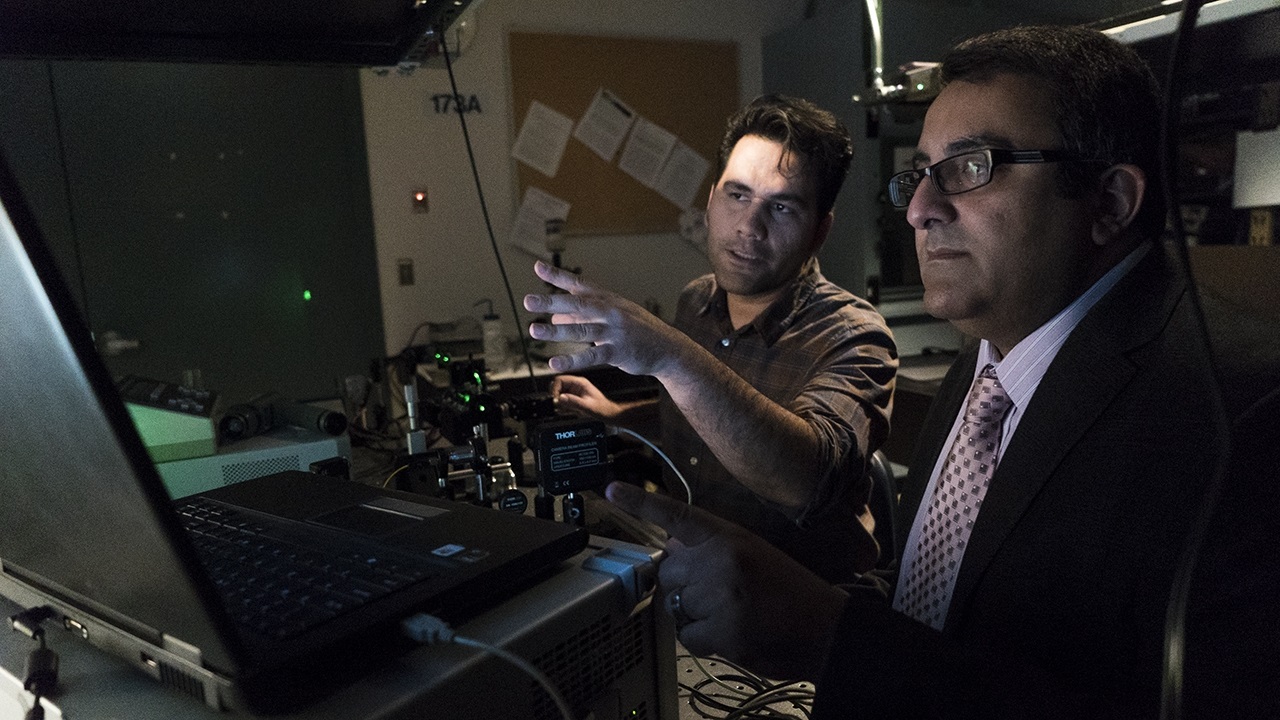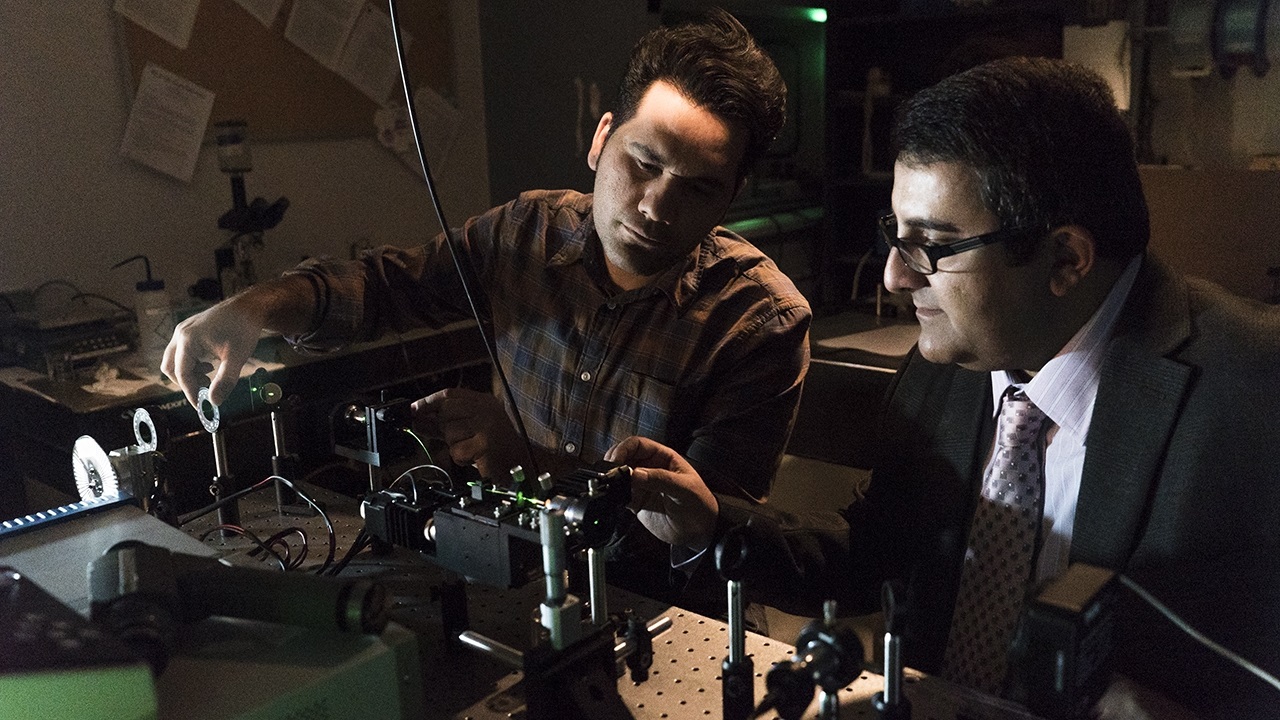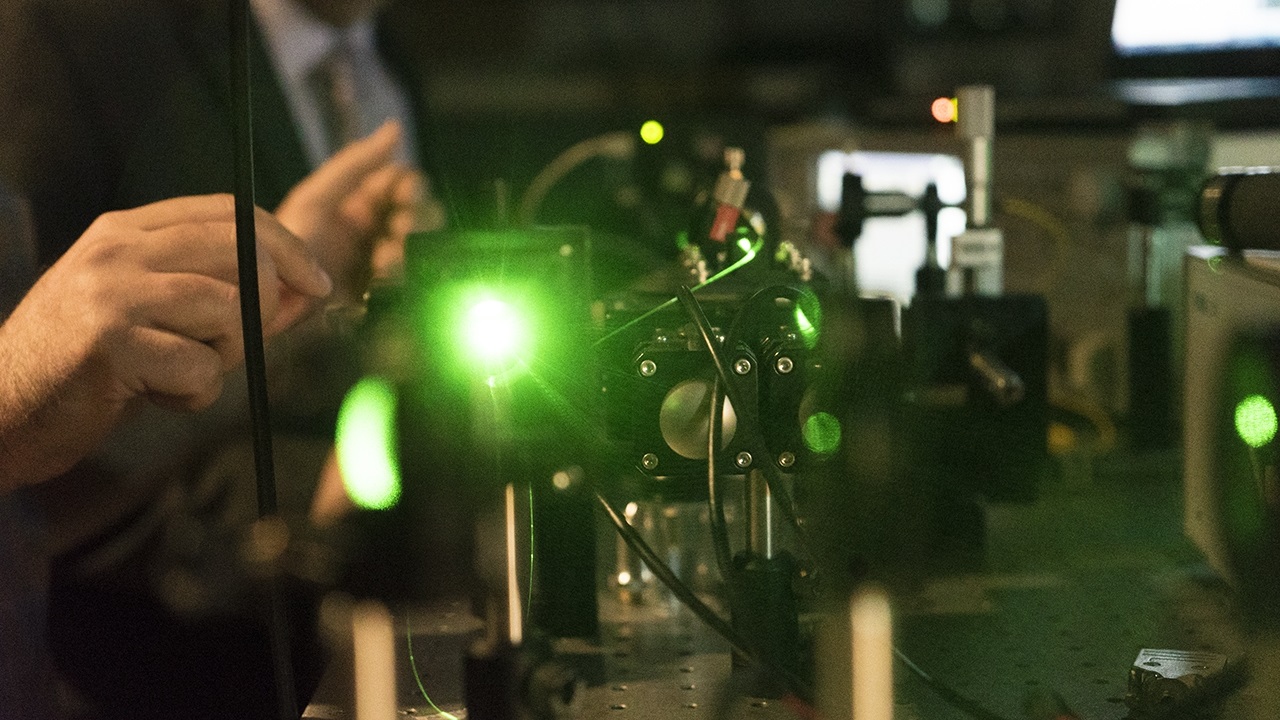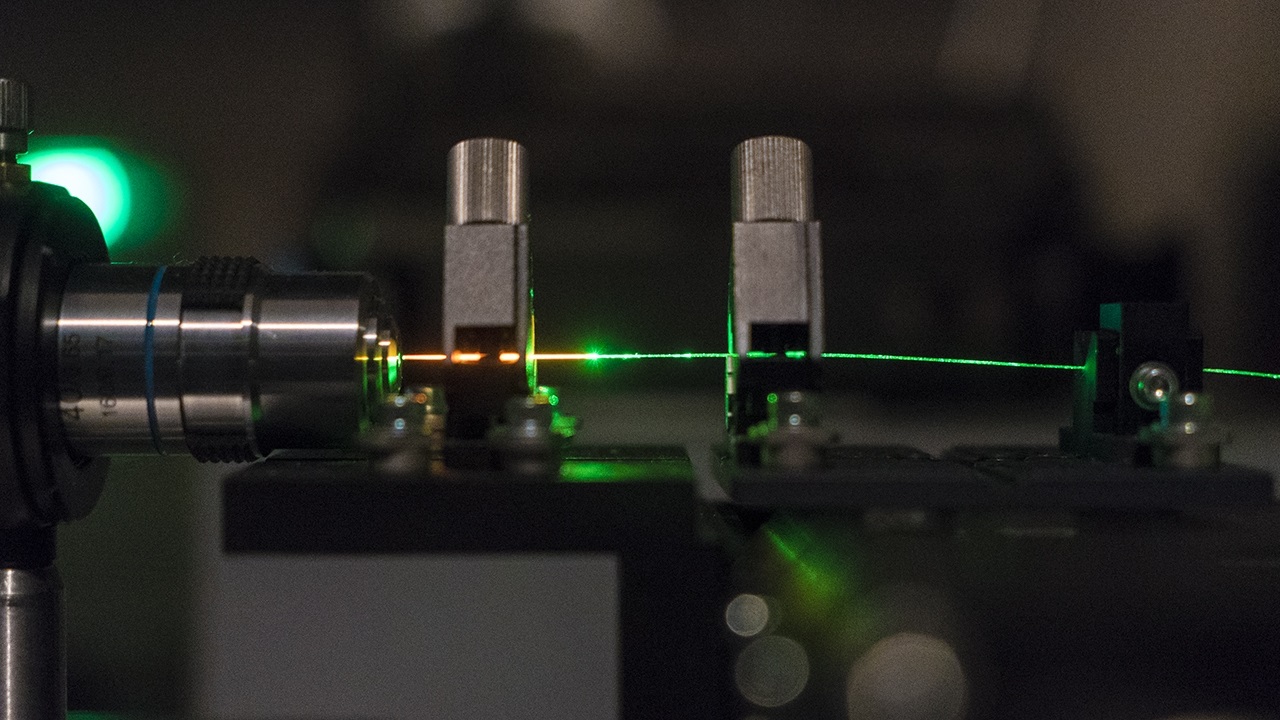October 25, 2017
By Aaron Hilf
At its most basic level, a random laser is precisely what its name implies; random. It’s random in the spectrum of light it produces and in the way that light is emitted, making what could be an extremely versatile laser source, nearly useless for most practical applications.
So, how to control some of the randomness to make useful devices? It’s a question that’s led a team of researchers at The University of New Mexico to a discovery that’s taking laser technology to the next level.
“It’s been incredible to see how this project has progressed,” said Behnam Abaie, a Ph.D. student at UNM’s Center for High Technology Materials (CHTM). “When I first came to work with Professor [Arash] Mafi, I knew this project had the potential to be very successful but I never expected this.”
Abaie is the first-author on the paper, ‘Random lasing in an Anderson localizing optical fiber’,recently published in Nature’s Light: Science & Applications. The article provides a technical analysis of how the research team, led by CHTM Interim Director Arash Mafi, is able to reliably control these extremely powerful, but previously uncontrollable, lasers.

Random Lasers
(l. to r.) Ph.D. student Behnam Abaie and Associate Professor Arash Mafi observe computer measurements being taken during a test of their device.
“Our success in being able to control these random lasers addresses decade-old issues that have prevented these lasers from becoming mainstream devices,” said Mafi, who is also an associate professor in UNM’s Dept. of Physics & Astronomy. “It’s a very exciting contribution.”
Traditional lasers consist of three main components: an energy source, gain medium and optical cavity. The energy source is provided through a process called ‘pumping’ and can be supplied through an electrical current or another light source. That energy then passes through the gain medium which contains properties that amplify the light. The optical cavity – a pair of mirrors on either side of the gain medium – bounce the light back and forth through the medium, amplifying it each time. The result is a directed, intense beam of light called a laser.
To be able to actually make devices that utilize this phenomenon, it’s taking the science to yet another level.” –Arash Mafi, Interim Director of CHTM
Random lasers, by comparison, perform using a pump, a highly-disordered gain medium but no optical cavity. They are extremely useful due to their simplicity and broad spectral features, meaning a single random laser can produce a beam of light containing multiple spectra, a very beneficial property for certain applications like biomedical imaging. However, given their nature, random lasers are difficult to reliably control due to their multi-directional output and chaotic fluctuation.

Laser Measurements
Abaie and Mafi test their revolutionary device capable of controlling these random lasers.
The UNM team, in collaboration with researchers at Clemson University and the University of California San Diego, has been able to overcome these obstacles in an efficient way – a victory they hope will continue to push the use of random lasers forward.
“Our device has all the great qualities of a random laser, plus spectral stability and it is highly directional,” said Mafi. “It’s a wonderful development.”
Researchers are able to achieve these results through the fabrication and use of a unique glass Anderson localizing optical fiber. The fiber is made of a ‘satin quartz’, an extremely porous artisan glass that is typically only used to calibrate the machinery that draws fiber optics. When pulled into long rods, the porous material forms dozens of microscopic air channels in each fiber.

Laser Light
To create a random laser, researchers pump the device using a single-colored green laser.
“The glass that we’re using for these fiber optics is actually material that we would typically throw away because it is very porous,” said Abaie. “But, it’s those holes in the glass that are actually creating the channels that control the laser.”
Once filled with a gain medium and pumped using a single-colored green laser, the random laser becomes less random and highly controllable, thanks to a phenomenon known as Anderson Localization.
“There is still a lot to learn about Anderson Localization but it’s exciting for us to be part of this development,” said Mafi. “To be able to actually make devices that utilize this phenomenon, it’s taking the science to yet another level.”
Mafi and his research team are some of the leading experts in Anderson Localization. In 2014, they published an article on a different device capable of transmitting images using the phenomenon. That research was named one of Physics World’s Top Ten Breakthroughs of the year.
Moving forward, Mafi says they hope to broaden the spectrum of this new device and make it more efficient, creating a broad spectrum illumination source that can be utilized around the world.

Glass Anderson Localized Optical Fiber
The research team fabricated a new type of optical fiber that is capable of controlling these random lasers.
Click here to learn more about The University of New Mexico Center for High Technology Materials.












